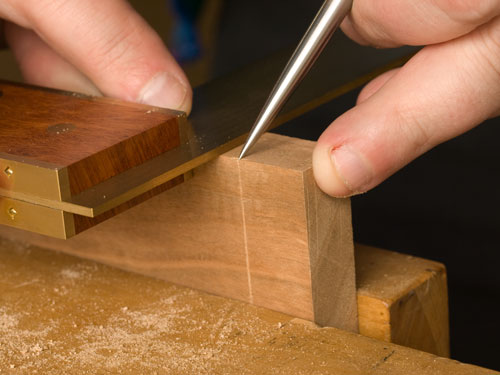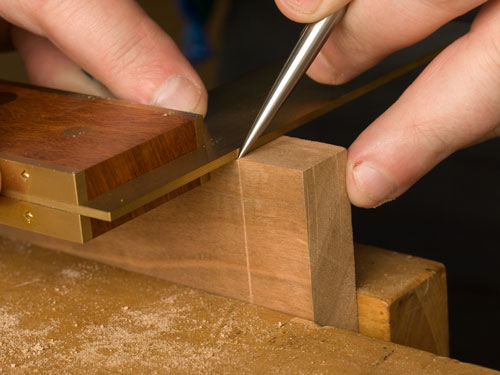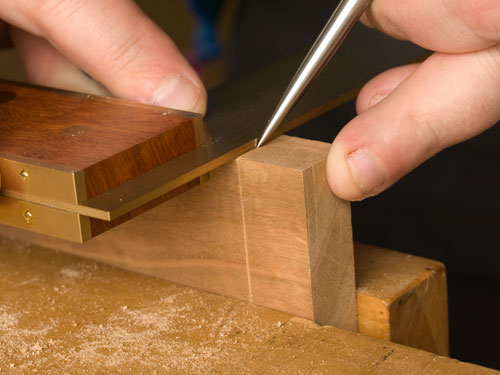|
|
12/31/2009 |
 | There is a big market in marking tools and no consensus what they should look like. Pointy, straight, single beveled, double beveled. thin, thick, it's a jungle out there. However, except for one not so common case the geometry of the layout tool really isn't important as long as you use the tool correctly. The correct way to do it is to bring the straightedge or square to the layout tool not the other way around. In this example I am using an awl. It has a thick body that comes to a point. Look how I am doing this. First I am putting the awl on the spot I want my line. Then I am sliding the square until it contacts the awl.
|

|
Then I scribe the line I need.
|

|
The point is that by sliding the square to meet the awl it doesn't really matter how thick or thin the layout tool is. As long the square touches the awl I will get a perfect line in the correct place. If I did the reverse, which is a common mistake, and placed the square where my mark was and THEN put down my awl, I would have to worry how much space I needed for the thickness of the awl. And if instead I used a single bevel layout knife with the flat bearing on the square I would easily, very easily, cut into and damage my square. Even tilting an awl so its point is right next to the square is a good way do damage a square and isn't as reliable a method as just moving the square to the awl.
Like any technique or habit it just takes paying attention a few times to it and then the skill will become automatic.
The special case is tracing the pins or tales of a dovetail to the opposing piece or some other tracing operation. In that case you need to tilt the tool so that it really scribes an outline, not a little bigger. For most dovetails, this isn't a problem but for really thin pins you just don't have clearance to tilt an awl. In that case a very thin, single bevel layout knife is your best bet. Even if you do accidentally cut into the piece you are scribing from, it's a one shot and not like permanently damaging a square which you use all the time.
|
|
Join the conversation |
|
 Joel's Blog
Joel's Blog Built-It Blog
Built-It Blog Video Roundup
Video Roundup Classes & Events
Classes & Events Work Magazine
Work Magazine




